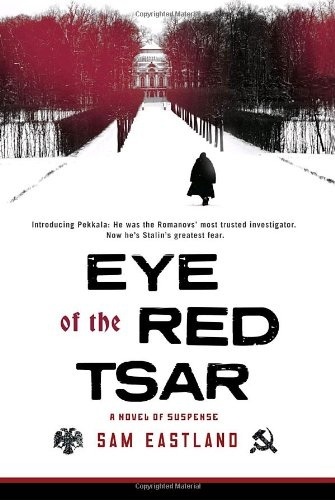










Sam Eastland on the Russian Buckle Front Detail Back
During the mid 1990’s, a friend of mine was present at a construction site in Russia when a backhoe unearthed the body of a soldier. The dead man was laying spread eagled on the carcass of a horse which had been buried at the same time. The man was wearing a long greatcoat, tall boots and had a thick leather belt across his middle. The clothing and the body had been preserved by the soil so that the man appeared to be partially mummified. Upon examination of the corpse, it became clear that the rider had been buried around the time of the First World War. It also seemed clear, from the fact that he had been laid to rest along with his horse, that the man had probably been buried on the same spot where he had been killed. The man’s belt buckle, which clearly showed the double-headed eagle of the Romanovs, identified him as a soldier of the Tsar’s Army. However, because of the location, which was not on what would have been the front lines during the Great War, the man must have been buried after, not during, the war. This would have placed the soldier’s death at some time in the early days of the Revolution, when soldiers still loyal to the Tsar, known as the Whites, fought pitched battles with the Bolsheviks, who became known as the Reds.
During the course of the construction, several other bodies were discovered, all of whom were similarly dressed and, presumably, had been killed during the same battle.
After the bodies had been re-interred, my friend was given one of the belt buckles as a souvenir. He then passed it on to me, and I still have it.
For every book, there is always some unexpected catalyst that sets everything in motion. Waiting for these catalysts to take hold is like standing in the path of a gently falling meteor shower. Ideas will come hurtling past, but they don’t hit you, so eventually you forget them. But then some image or some anecdote will strike you right between the eyes. From that point on, the formation of the book becomes like the making of a pearl inside an oyster. The grain of sand embeds itself inside the oyster. The oyster is not trying to produce a thing of beauty. It is trying to survive. The pearl is the product of pain. It is the same with these stories. Once they have snagged like a fishhook in your brain, you have to find a way to work them loose.
Holding that buckle in my hand made me think of the tens of thousands of people who were swallowed up in that revolution whose stories have never been told. Russian history, perhaps more than any other country, is layered with so many lies, denials, discreditations and rehabilitations that there is no one version of that country’s past. The only reliable stance to take is that nothing about it is reliable. And yet you know that the truth is in there somewhere, woven into the fabric of these deceptions.
For months after I began writing "The Eye of the Red Tsar", that rider galloped through my dreams. It became an act of self-preservation to conjure back to life the story of that buckle, and of the man who wore it to his death.

